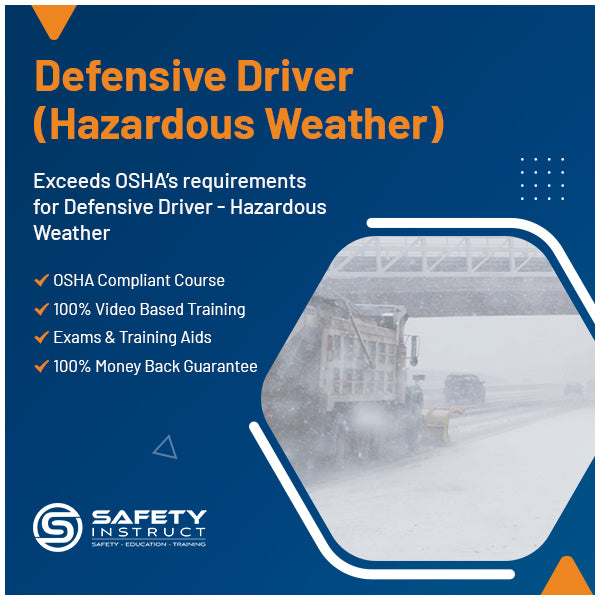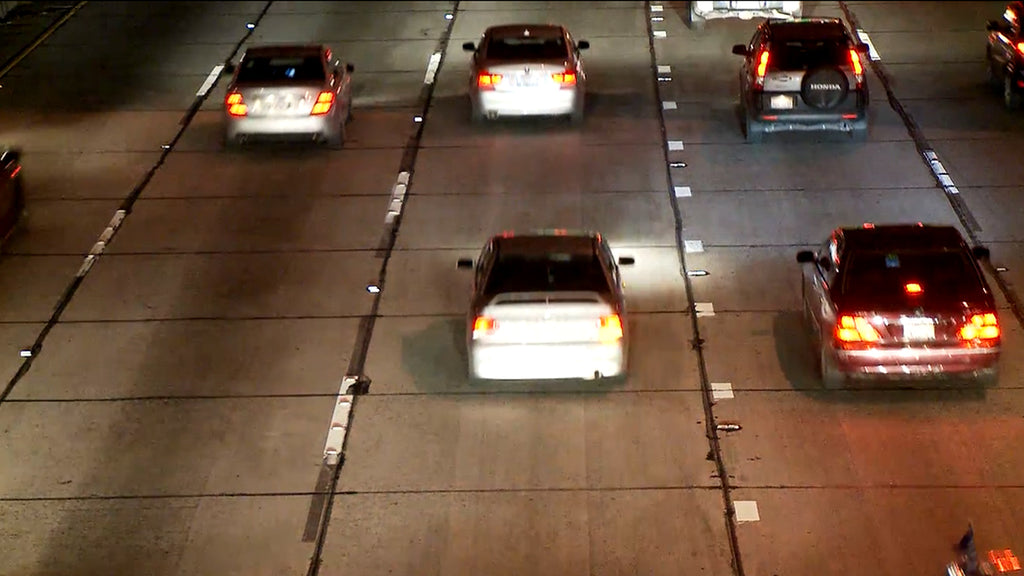No Products in the Cart
Click Here to Schedule a FREE Consultation
Phone: 866-943-6887 Email: sales@safetyinstruct.com



Rain. Snow. Ice. Fog. Wind. Hazardous weather takes on many forms and has a huge impact to one's ability to drive safely. Knowing how to react and respond in various types of weather will go a long way to keeping you, and other drivers, safe on the road.
Friction
Loss of friction is the primary reason you lose control of your car. Your tires are made to grip the road while they turn, but bad weather, be it rain, snow, or ice, can easily make a surface slippery and cause your wheels to spin, and you to skid out of control. Heavy winds can blow you off course, even into oncoming traffic. It is important to have good, safe tires, and to know how to handle a car when it slides and skids.
Types of Hazardous Weather
There are many types of hazardous weather. We all know that heavy rains and ice storms can be dangerous, but so can snow, fog, and even a light rain, if you are unprepared. Visibility becomes compromised, your tires lose their ability to grip the surface, and you can encounter unseen dangers, like black ice, in an instant.
Losing Control
If you find yourself driving in bad weather, it is important to slow down, avoid sharp turns, and avoid standing water if you are able. Make sure you tap the brakes gently, never slam the brakes, and turn into a skid if you find yourself spinning. If possible, get off the road and wait until the weather clears up.
Winter Driving
Winter weather can quickly turn a clean road into a wet, icy one. Snow makes it hard to see the cars ahead of you, and when it accumulates on the road, it becomes harder to orient yourself or see patches that might be icy. If the road is not maintained, or contains lots of curves, it is imperative that you drive slowly, pay attention, and know how to handle your car when it begins to slide out from under you. Another danger is other drivers, who are also losing control of their cars and could be sliding off the road or into you. It is not uncommon to find cars simply stopped on the road, and even with flashers blinking, they can be hard to see until you get close. Always pay extra attention, and be prepared for emergencies by always keeping flares, blankets, and flashlights in your vehicle. Remember, next time, the car stuck on the side of the road might be you.


